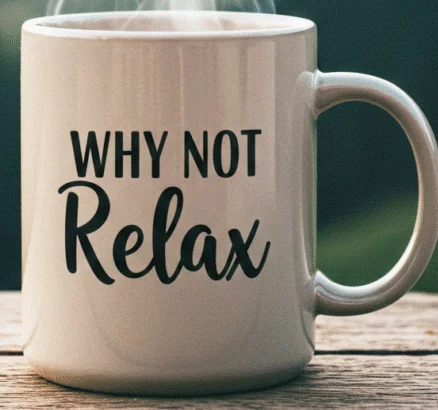Why Fall Detection Matters More Than Ever
Did you know that 1 in 4 Americans aged 65 and older falls every year ? And here’s the alarming part: falling once doubles your chances of falling again. For many older adults, a single fall can lead to serious injuries like broken bones, head trauma, long-term disability—or even loss of independence.
But what if help could arrive the moment a fall happens? That’s where fall detection watches come in. These devices are no longer just fancy step counters—they’re now potentially life-saving tools. Imagine wearing a small device on your wrist that can sense a sudden fall and automatically call emergency services or alert your family . No need to fumble for a phone. No need to shout for help. It just… does it.
In a world where more and more seniors live independently, these devices provide priceless peace of mind—not only for the person wearing it but also for their loved ones. Especially in 2025, with smarter sensors, better accuracy, and faster response times, these wearables are now a serious part of personal safety.
And it’s not just for “old people.” If you’re an active retiree, a caregiver, or someone managing chronic conditions, a fall detection watch might be the quiet hero you didn’t know you needed .
👉 Curious which devices are actually reliable and worth your money? Keep reading—there’s a detailed comparison coming up that includes features, pricing, and direct buying links.
How Do Fall Detection Watches Actually Work?
Fall detection watches may seem like magic—but they actually rely on some clever technology inside. These devices use built-in sensors, like accelerometers and gyroscopes , to track your movement. If the watch senses a sudden, unusual motion—like a sharp drop followed by no movement—it thinks: “This might be a fall.”
Once a possible fall is detected, most watches will vibrate or sound an alert and give you about 30–60 seconds to respond. If you tap “I’m OK,” the alert stops. But if you don’t respond, the device automatically calls emergency services or sends a text alert to your emergency contacts —like your spouse, adult children, or neighbor.
What’s amazing is how accurate these systems have become in 2025. Devices like the Apple Watch now use machine learning to reduce false alarms, and they can even distinguish between a stumble, a strong jolt (like dropping the watch), or a true fall.
Some devices also use GPS tracking to share your location when a fall happens. That means help can come not just quickly—but to the right place.
👉 Want to know which models have the best detection accuracy? The next section breaks it all down by price and performance.
Top-Rated Fall Detection Watches in 2025 (With Price Tiers)
There are dozens of wearable devices on the market claiming to protect your health—but not all fall detection systems are created equal. To help you choose the right one, we’ve grouped the most popular and reliable models into three price ranges. Whether you’re shopping on a budget or looking for the best tech available, there’s an option here for you (or your loved one).
💲 Budget-Friendly (Under $150)
Medical Alert Smartwatch Check on Amazon WellBe Smartwatch View on Amazon
💰 Mid-Range ($150–$400)
Galaxy Watch 7 Check Latest Price Apple Watch SE (2nd Gen) Buy on Amazon
💎 Premium (Over $400)
Galaxy Watch Ultra View on Amazon Oura Ring Gen4 Horizon View Oura on Amazon
👉 Still unsure which one’s best for you? Scroll down for a checklist that helps match your lifestyle, health goals, and tech comfort level to the right device.
Compare Popular Fall Detection Devices (2025)
Device
Price Range
Key Features
Buy Link
MGMove by Medical Guardian
Under $150
Fall alerts, emergency SOS, simple interface
Amazon
WellBe Smartwatch
Under $150
Fall detection, medication reminders, step tracking
Amazon
Apple Watch SE (2nd Gen)
$150–$400
Fall detection, ECG, heart rate, fitness tracking
Amazon
Galaxy Watch 7
$174–$400
Fall detection, sleep tracking, blood pressure
Amazon
Galaxy Watch Ultra
Over $330
Fall detection, GPS, BioActive Sensor for heart rate and ECG
Amazon
Oura Ring Gen4
Over $400
Heart rate, temperature, recovery insights
Amazon
👉 Still not sure which one suits your needs best? Scroll down for a simple checklist to help you decide with confidence.
Real Stories: When a Watch Saved a Life
Let’s step away from the tech talk for a moment and talk about real people. Because sometimes, numbers and features can’t quite explain the full value of a fall detection watch. But stories can.
Meet Carol, age 72, from Florida.
And then there’s Tom, age 68, from Oregon.
Even younger seniors and caregivers are embracing these tools—not out of fear, but out of preparedness . And that mindset can make all the difference. You’re not just buying a watch—you’re giving yourself a layer of confidence and independence.
👉 Want help choosing the right model for your lifestyle or loved one? The next section walks you through what to look for—and what to avoid.
What to Look For Before You Buy
Choosing a fall detection watch isn’t just about picking the fanciest or cheapest option. It’s about finding the right fit for your lifestyle, comfort, and safety needs . Here are the key features and factors to consider before clicking that “Buy Now” button:
Accuracy of Fall Detection: Look for devices with proven, low false-alarm rates. A watch that calls for help too often can be annoying, but one that misses real falls is dangerous.Emergency Contact Setup: Check how easy it is to add and update emergency contacts. Some watches let you add multiple people and customize alert messages.Battery Life: Longer battery life means less hassle charging daily. Some premium models last 2 days or more; budget options might need charging every day.Comfort and Wearability: If it’s uncomfortable, you won’t wear it consistently. Look for lightweight designs with adjustable straps or bands.Additional Health Features: ECG, heart rate monitoring, blood oxygen levels—these can provide extra peace of mind but usually come with higher prices.GPS and Location Tracking: Essential if you live alone or travel often. Being able to send your location in an emergency is a game changer.User Interface and Alerts: Large buttons, clear displays, and easy-to-understand alerts help seniors who may not be tech-savvy.Subscription Fees: Some devices require monthly fees for emergency monitoring services. Factor this into your budget.
👉 Want more tips? Scroll down to our Buyer’s Checklist —a quick guide to make sure you get the perfect watch for your needs.
Buyer’s Checklist: Find the Right Fit for You
Buying a fall detection watch is a big decision—so let’s make it easy! Use this checklist to make sure the watch you pick fits your unique lifestyle, health needs, and comfort.
Do you live alone or mostly by yourself? Are you tech-savvy or prefer simplicity? How active are you? Is budget a big concern? Do you have any specific health concerns? How important is style and comfort? Do you have reliable Wi-Fi or cellular connection? Are you comfortable setting up emergency contacts?
✅ If you checked most of these boxes, you’re well on your way to choosing a watch that truly supports your safety and peace of mind.
👉 For even more info, check out trusted reviews and user feedback before you buy. And if you’re ready, scroll back up to our top picks and click to buy with confidence!
Further Reading and Trusted Resources
If you want to learn more about fall detection technology and wearable health devices, here are some reliable and authoritative sources to explore:
👉 Remember, no device can replace common sense and caution—but the right wearable can be a powerful safety partner.

